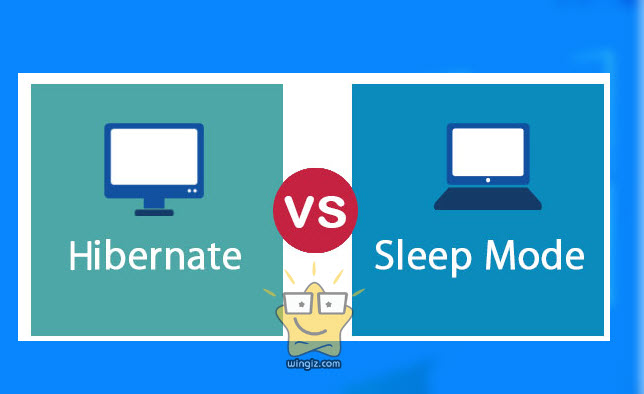

- #Hybrid sleep vs hibernate full
- #Hybrid sleep vs hibernate software
- #Hybrid sleep vs hibernate professional
- #Hybrid sleep vs hibernate free
- #Hybrid sleep vs hibernate windows
#Hybrid sleep vs hibernate software
Some peripheral devices or software programs would get confused when your computer woke up from sleep mode, causing unpredictable behavior. Waking up from sleep mode has always been a problem, although with better coordination between hardware makers and Microsoft, it is less of a problem than in years past.
#Hybrid sleep vs hibernate full
If you disable hybrid sleep in the Control Panel, you will then see the option for a full hibernation alongside the sleep option, which will now behave as it did in prior versions of Windows. Hybrid sleep is on by default, which explains why you do not see the option to hibernate in the shut down menu any more in Windows Vista and later. When you wake up your computer, it will resume operations immediately from RAM and delete the hibernation file if your computer happened to lose power or the battery died while it was asleep, then it can restore what was in RAM from the hibernation file. When you put your computer to sleep, Windows Vista and later saves the contents of your RAM as if it's going to hibernate, then goes into sleep mode, maintaining what's in RAM as well. Windows Vista (2007) introduced hybrid sleep, which combines the best of sleep mode and hibernation. The hibernation option is usually not available by default to see the option to hibernate in the shut down menu, you will need to enable it in the Control Panel. Windows XP and later support compressing the contents of your working memory to make a smaller hibernation file for better performance. Prior to Windows XP (2001), hibernation made a file as large as your system RAM. The earlier Windows 95 and Windows 98 supported it only if the computer manufacturer provided hardware-specific software drivers, and it may have gone by other names, such as suspend-to-disk. Hibernation is supported in Windows Me (1999) and later, including Windows 2000 Professional.

#Hybrid sleep vs hibernate windows
When you turn your computer back on, Windows will see that there is a hibernation file, and it will copy that into RAM and resume operations.
#Hybrid sleep vs hibernate free
This does, however, require enough free space on your hard drive to save the contents of RAM, which isn't typically a problem on modern computers. All programs and documents you had open will be imaged in the hibernation file exactly as they were in RAM.

It requires no electricity to maintain this state. Windows Versionĭesigned primarily for laptops, hibernation involves the computer saving the entire contents of your computer's working memory (RAM) to a file on your hard drive, enabling the computer to turn off completely. Although it went by different names over the years, it is functionally the same.
#Hybrid sleep vs hibernate professional
Windows 2000 Professional supported it on laptops only. Sleep mode is supported in Windows 95 and later (depending on your computer hardware), except for Windows NT 4.0 (1996). Laptops typically go into sleep mode when you close the lid as well. When you are away from your computer and you have to wiggle the mouse to wake it up, and you hear the fans and hard drives spinning up from being off, this is your computer coming out of sleep mode.įor a while, it was common for laptops, and even keyboards for desktop computers, to have a button or key with a moon-shaped icon, which would signal the computer to go to sleep mode.

Many computers go to sleep by themselves after a period of inactivity. In some cases, your computer may detect when it's about to lose power while in sleep mode, and it will hibernate itself to avoid losing your saved state. The same thing will happen if you have a desktop computer in sleep mode (without any kind of supporting battery), and the power goes out or the computer is unplugged. If you leave a laptop in this state for too long and the battery drains, the computer may simply shut off, and you might lose work you had not saved, because working memory (RAM) always needs continuous electricity. The computer draws only enough power to maintain this state, and to detect a keyboard button press or mouse movement to wake up the computer and resume normal operations. Your screen turns off, the hard drive spins down, and most peripherals are disconnected. All programs and documents stay open in RAM, but anything the computer was doing is suspended (such as a file download). In this mode, your computer turns off everything except limited control electronics on the main system circuit board (motherboard), and your system working memory (RAM).


 0 kommentar(er)
0 kommentar(er)
